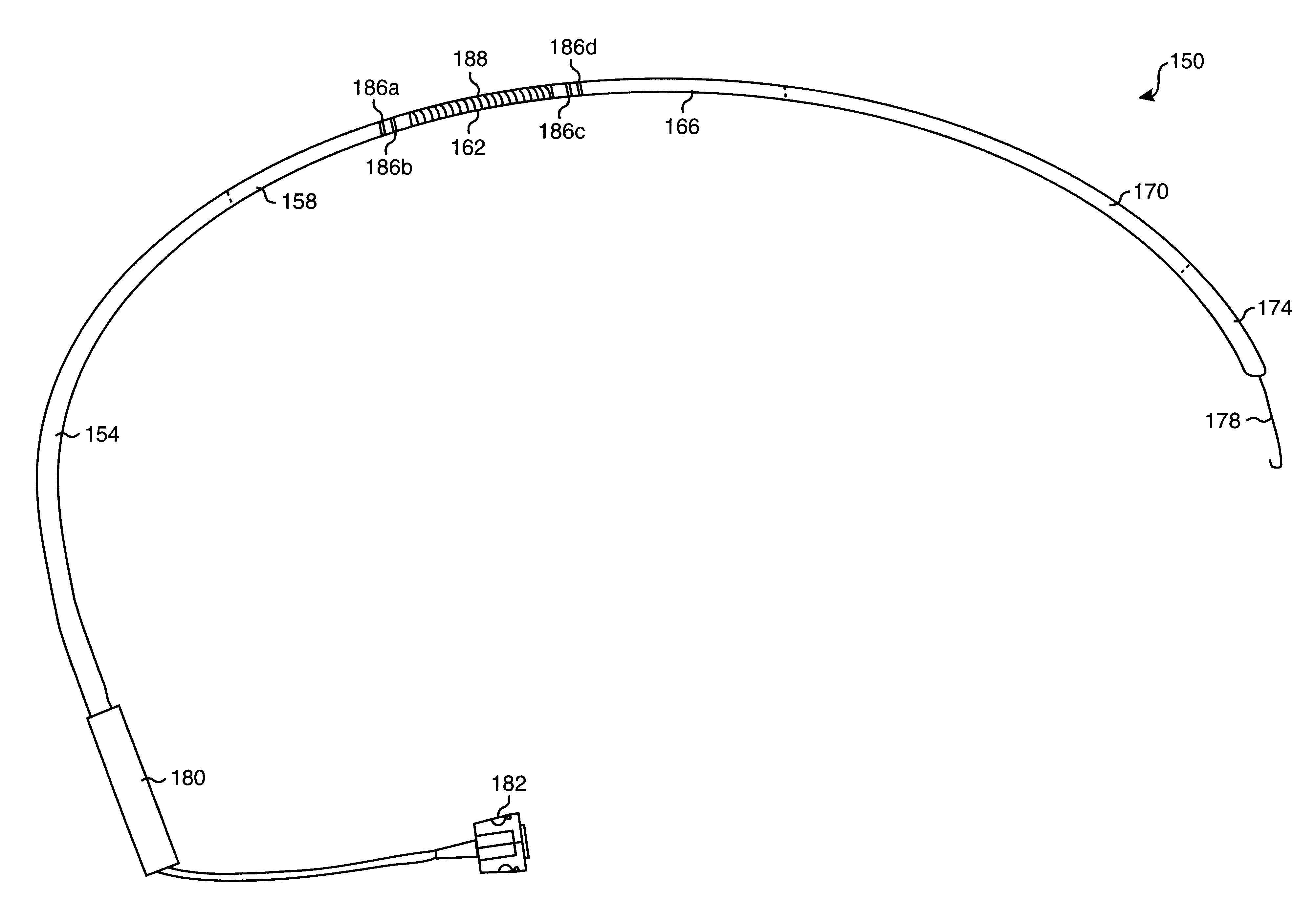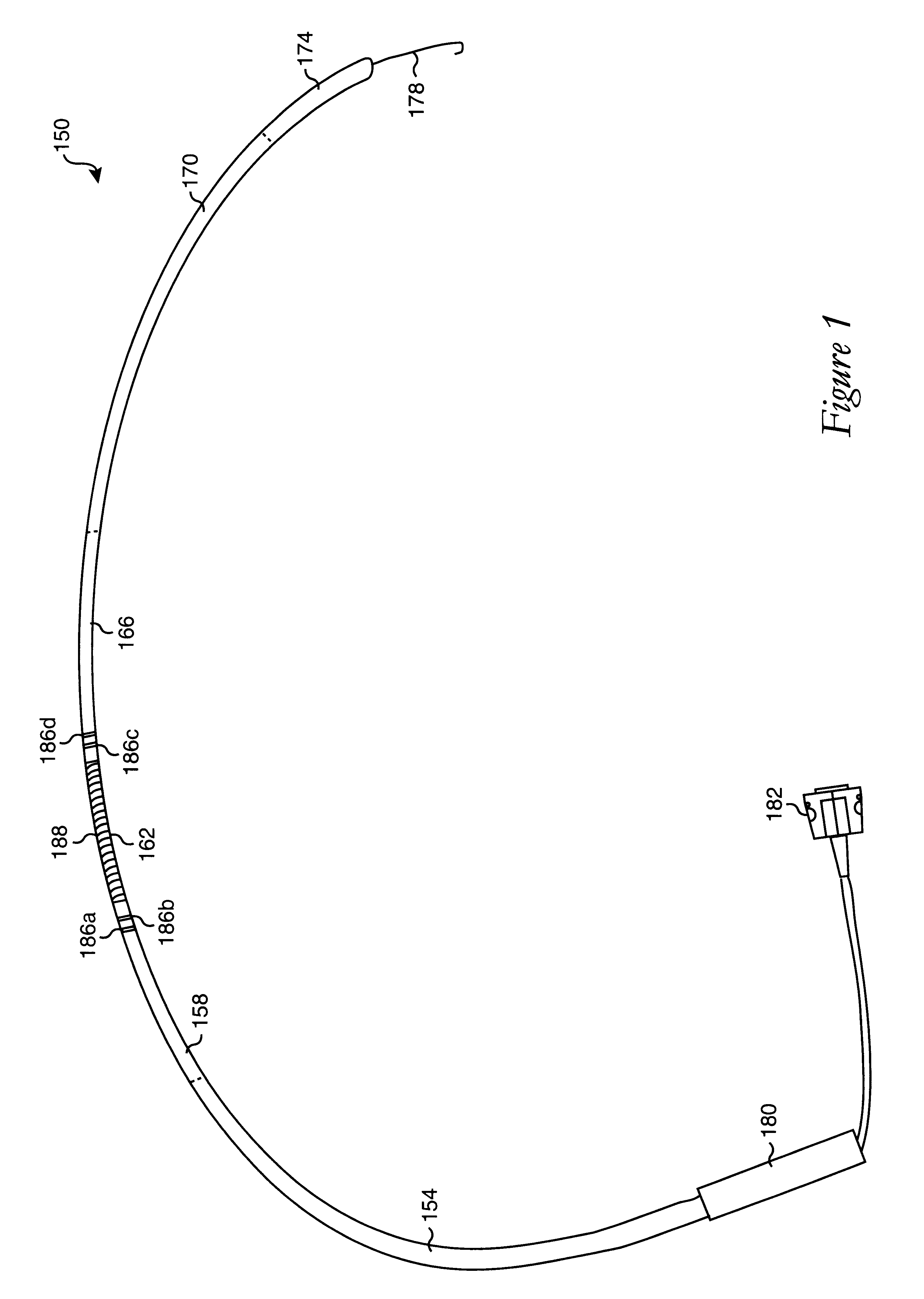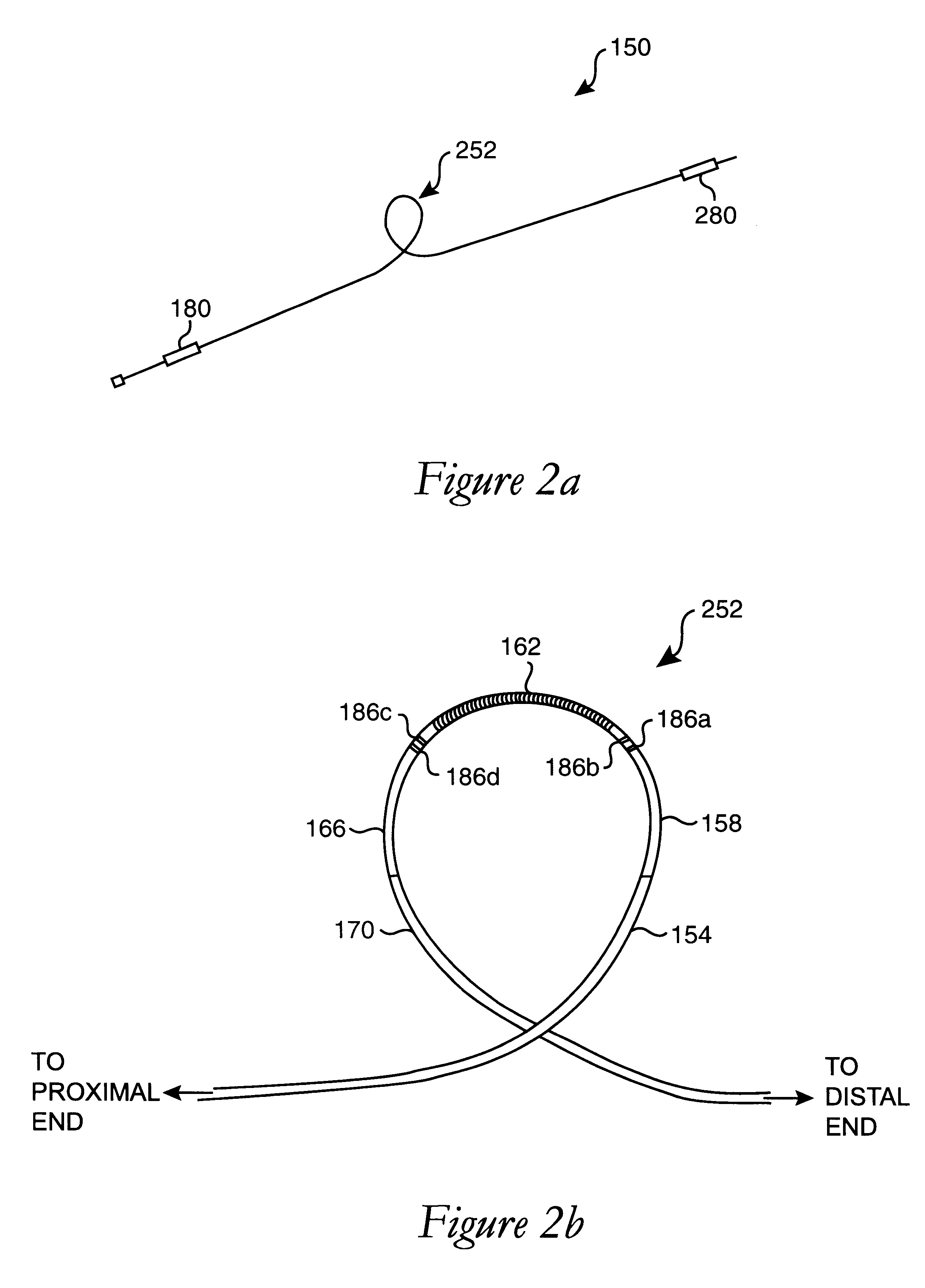Microwave ablation catheter with loop configuration
- Summary
- Abstract
- Description
- Claims
- Application Information
AI Technical Summary
Problems solved by technology
Method used
Image
Examples
first embodiment
Referring next to FIG. 4a, the internal structure of the interface between a first proximal section of a catheter and a second proximal section of the catheter, e.g., first proximal section 154 and second proximal section 158 of catheter 150 of FIG. 1, will be described in accordance with the present invention. Transmission line 308, which may be a coaxial cable as described above, is disposed within both first proximal section 154 and second proximal section 158. As transmission line 308 is arranged to be coupled to a power source which is typically external to the overall catheter, transmission line 308 extends through substantially the entire length of first proximal section 154. Shrink tubing 330 extends through the entire length of second proximal section 158, and slightly into first proximal section 154. In one embodiment, shrink tubing 330 extends approximately one centimeter past the "transition" between first proximal section 154 and second proximal section 158. Like transm...
second embodiment
FIG. 7 is a diagrammatic longitudinal cross-sectional representation of an antenna portion of a loop catheter formed using polyethylene in accordance with the present invention. It should be appreciated that for illustrative purposes, antenna section 702 and components of the overall loop catheter that are located within antenna section 702, have not been shown to scale. For instance, the relative sizes of some components within antenna section 702 have been exaggerated for illustrative purposes. Antenna section 702 includes a center conductor 704 which is part of a transmission line 708. In one embodiment, transmission line 708 may be a coaxial cable. Transmission line 708 may be coupled to a power supply that is external with respect to the overall catheter. The dimensions of transmission line 708 may vary depending upon the requirements of a particular loop catheter for. By way of example, the outer diameter of transmission line 708 may vary in the range of approximately 0.10 to ...
third embodiment
One suitable handle that may be used in conjunction with a loop catheter is a handle that may be slidably attached and detached from the catheter, as will be described with reference to FIGS. 8a-8d. FIG. 8a is a diagrammatic side-view representation of a detachable handle in accordance with the present invention, while FIG. 8b is a diagrammatic cross-sectional axial representation of the handle. FIGS. 8c and 8d are diagrammatic side-view representations the components of the handle. As shown in FIG. 8a, a handle 804 is arranged to be mounted on a catheter 806 such that handle 804 is aligned along a longitudinal axis of catheter 806. When handle 804 is to be mounted over, or around, catheter 806, catheter is first placed in a groove 820 of base component 812.
Groove 820, as shown in FIG. 8b, is arranged to securely accommodate catheter 806. In other words, groove 820 is sized such that catheter 806 may be held within groove 820 without being damaged. As such, the curvature present in ...
PUM
 Login to View More
Login to View More Abstract
Description
Claims
Application Information
 Login to View More
Login to View More - R&D
- Intellectual Property
- Life Sciences
- Materials
- Tech Scout
- Unparalleled Data Quality
- Higher Quality Content
- 60% Fewer Hallucinations
Browse by: Latest US Patents, China's latest patents, Technical Efficacy Thesaurus, Application Domain, Technology Topic, Popular Technical Reports.
© 2025 PatSnap. All rights reserved.Legal|Privacy policy|Modern Slavery Act Transparency Statement|Sitemap|About US| Contact US: help@patsnap.com



